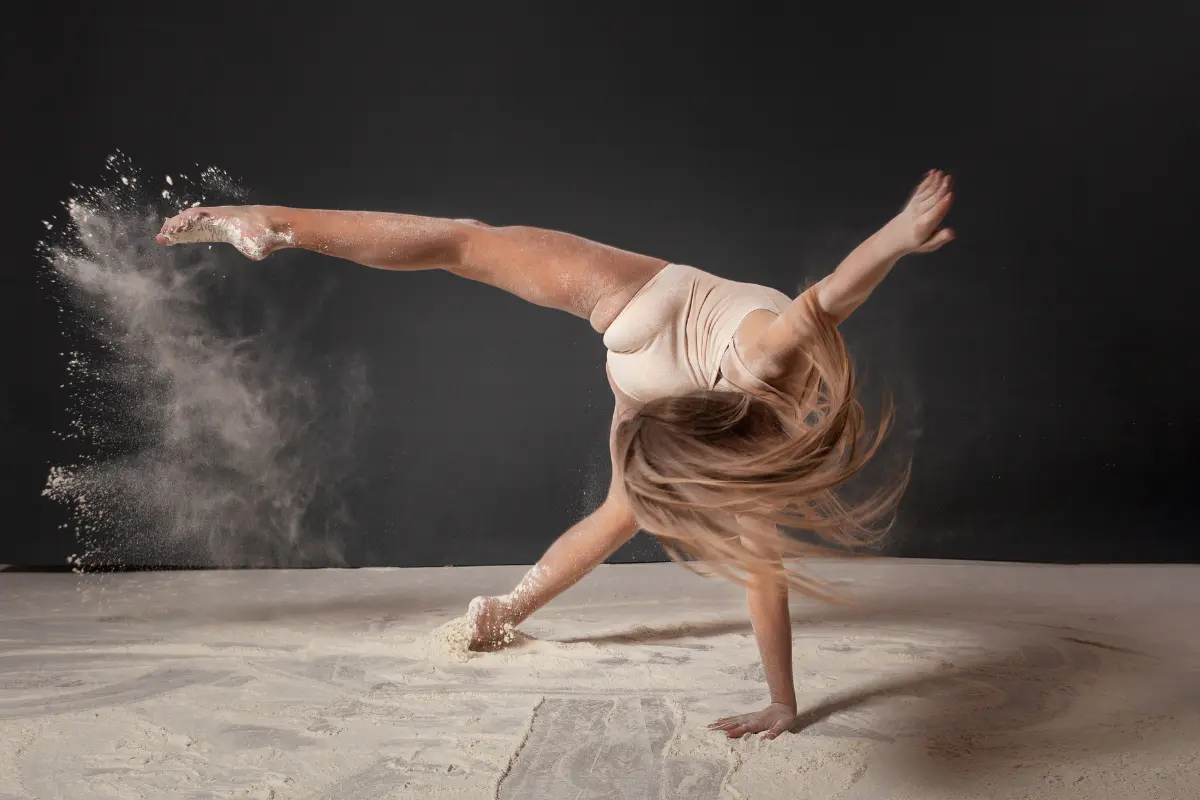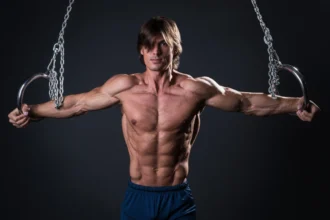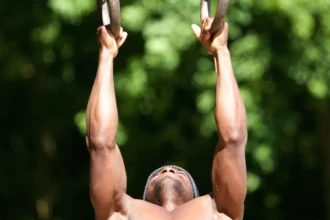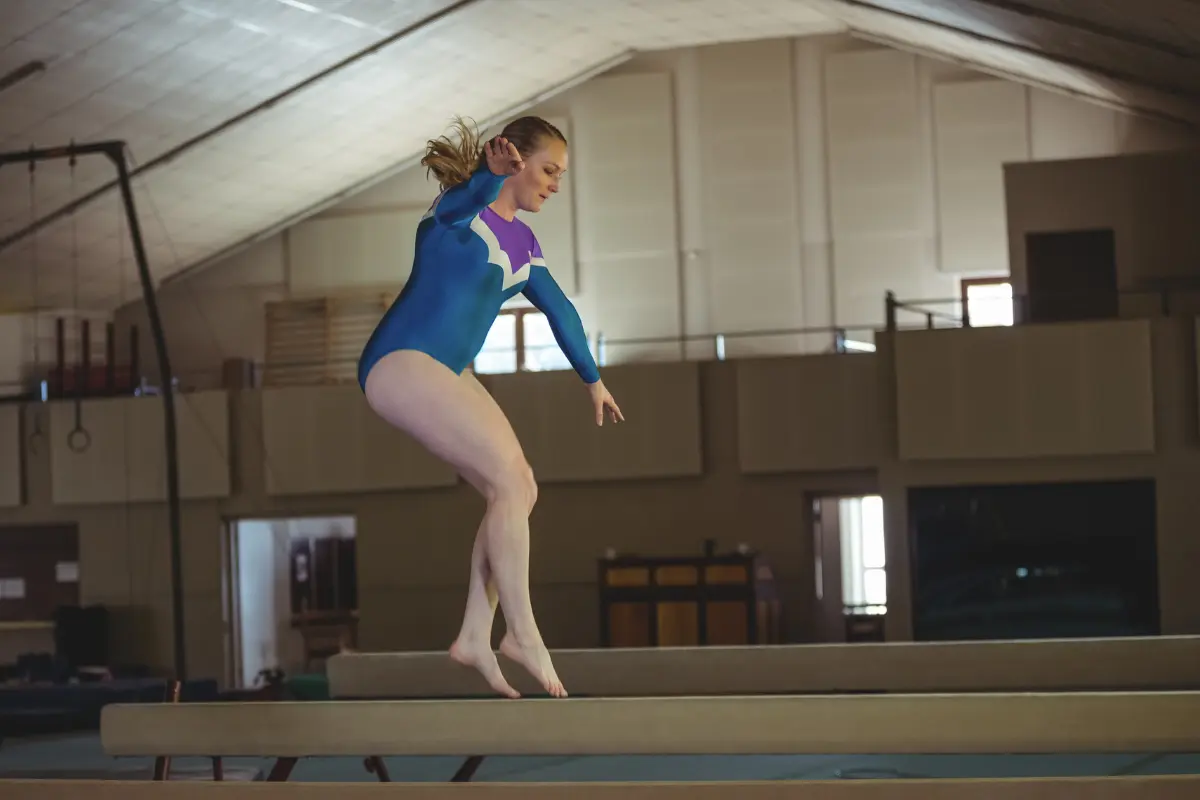Gymnastics is a stunning sport that showcases strength, flexibility, and grace. While many advanced gymnastics skills take years of training to master, some moves are easier than they look. With a little practice, you can wow your friends and family with these impressive yet achievable gymnastics tricks.
Here’s a detailed guide on five gymnastics moves that look challenging but are surprisingly manageable to learn.
1. The Forward Roll to Straddle Stand
How it looks:
The forward roll to straddle stand is a graceful transition that starts with a classic forward roll and finishes with the gymnast standing up in a wide-legged straddle position. The seamless transition from a tucked position to standing makes this move look smooth and polished.
Why it’s easier than it looks:
While the move appears to require strength and balance, it relies more on momentum than anything else. The forward roll is a basic skill that most beginners learn early on, and the straddle stand simply uses the motion from the roll to rise smoothly to the feet.
How to do it:
- Start in a standing position with your legs in a straddle (feet wider than shoulder-width apart).
- Tuck your chin to your chest, squat down, and place your hands on the floor in front of you.
- Roll forward over your shoulders while keeping your legs in the straddle position.
- As you complete the roll, press your hands into the floor between your legs and push your body up into a standing position.
- Finish standing with your legs wide apart and arms stretched out.
Tips for learning:
- Practice rolling forward with control; the key is not speed but maintaining form.
- Push through your arms and engage your core as you transition to standing.
- Perform on a soft surface or mat to cushion your back and neck during the roll.
- Focus on keeping your legs straight and wide in the straddle to maintain balance as you stand.
2. The Back Walkover
How it looks:
The back walkover is a beautiful move where the gymnast bends backward into a bridge, then gracefully kicks one leg over their head, returning to a standing position. It looks both flexible and powerful, and the smoothness of the movement adds an extra level of difficulty to its appearance.
Why it’s easier than it looks:
The back walkover mainly requires flexibility and balance, rather than raw strength. Once you can comfortably perform a backbend and have decent leg control, the walkover becomes more about timing and coordination. The leg motion gives you momentum to complete the movement with less effort than it seems.
How to do it:
- Start standing with your arms raised overhead and one foot slightly forward.
- Shift your weight onto the back foot and slowly arch your body backward into a bridge, keeping your hands extended and ready to catch yourself on the floor.
- Once in the bridge position, kick your leading leg up and over, allowing the momentum to lift your second leg off the ground.
- Continue the motion until both feet land softly on the floor, with your body returning to a standing position.
Tips for learning:
- Work on your bridge and flexibility, especially in the back and hamstrings. A good bridge will make the walkover feel much smoother.
- Practice your leg kick separately to build the control and strength needed to finish the walkover.
- Use a spotter or practice on soft mats to gain confidence in the backward movement.
- Focus on keeping your legs straight and pointed to make the move look as elegant as possible.
3. The Bridge Kickover
How it looks:
The bridge kickover is a visually striking move that starts in a bridge position, with the gymnast kicking one leg over their body to transition into a standing position. It appears to require great strength and flexibility, as the body moves from a backbend into an upright stance with fluid motion.
Why it’s easier than it looks:
This skill is more about flexibility and technique than raw power. Once you’re comfortable in a bridge and can hold the position steadily, the kickover uses the momentum from your leg to carry you over. Flexibility in your back and legs is key, so if you’ve developed those, the bridge kickover becomes more achievable.
How to do it:
- Begin by lying on your back, with your knees bent and feet flat on the floor.
- Push your hands and feet into the ground to lift into a bridge position. Your arms should be straight, and your feet should stay grounded as your hips lift high.
- Shift your weight onto one foot and kick your other leg straight up towards the ceiling.
- As your leg moves upward, use the momentum to push your body over, allowing your second leg to follow.
- Land softly with both feet on the ground, returning to a standing position.
Tips for learning:
- Work on back flexibility through stretches such as the cobra and bridge pose to help with the arch in your back.
- Practice holding a strong bridge before attempting the kickover to ensure your arms and shoulders can support your body weight.
- Start by practicing the kickover with a spotter or by using a wall to push off from until you are comfortable with the motion.
- Focus on kicking with force but control to help guide your body over safely.
4. The Split Leap
How it looks:
The split leap is an elegant, airborne move where the gymnast appears to effortlessly leap into the air and achieve a full split at the height of the jump. This skill is often incorporated into floor routines and beam performances, adding a dynamic flair.
Why it’s easier than it looks:
Although it looks like it requires extreme flexibility and height, the split leap uses momentum from the run-up to achieve the height and the split. The key is timing—kicking the legs into the split position at the right moment in mid-air leaps feels more fluid and less strenuous than a static split.
How to do it:
- Begin with a few running steps to build momentum.
- Push off one foot, lifting the other leg forward and high.
- As you jump, extend your back leg behind you into a full split at the height of the leap.
- Maintain the split position as long as possible before landing softly on your leading leg, and then bringing your feet together.
Tips for learning:
- Practice your splits on the ground regularly to improve flexibility.
- Work on your timing by starting with smaller leaps and focusing on extending your legs at the peak of the jump.
- Engage your core muscles to stabilize your body during the leap, helping you maintain control mid-air.
- Try practicing on a soft surface or using mats to cushion your landing while you perfect your form.
5. Cartwheel
How it looks:
A cartwheel is a dynamic and fluid movement where the gymnast moves sideways by placing their hands on the ground and rotating their legs in a split position over their head. It looks like a flashy yet smooth move, as the gymnast rotates their body 360 degrees, from one side to another, while maintaining control.
Why it’s easier than it looks:
The cartwheel primarily requires coordination, rather than brute strength or extreme flexibility. It uses momentum to carry the gymnast through the movement, and once the mechanics are understood, it can be performed with ease. For beginners, learning the basics of hand placement and leg movement is often the hardest part, but the overall move is straightforward to execute.
How to do it:
- Start standing up with one foot in front of the other, arms raised overhead.
- Lunge forward with your front leg and reach down toward the ground, placing your first hand on the floor followed by the other.
- As your hands touch the ground, kick your legs up and over, keeping them in a straddle position.
- Push off your hands as your legs come back down, landing on one foot and then the other.
- Finish by standing up with your arms raised, facing the direction opposite to where you started.
Tips for learning:
- Start by practicing hand placement. Hands should go down one after the other to guide the body through the motion.
- Focus on straightening your legs and pointing your toes during the kick to make the cartwheel look cleaner.
- Practice cartwheels in an open space or on soft mats to feel comfortable with the movement.
- Use a wall or practice with a partner for support if you feel unsteady at first.
These five gymnastics moves are all excellent for building confidence and showing off skills that look much harder than they actually are!






